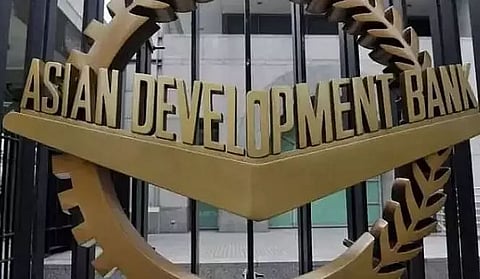
- Home
- Live Blog
- Breaking News
- Top Headlines
- Cities
- NE News
- Sentinel Media
- Sports
- Education
- Jobs

Various projects under India’s Act East and Neighbourhood First policies have triggered new connectivity hopes and ending isolation of the landlocked northeast region. A feasibility study carried out by the Asian Development Bank (ADB) has identified key growth centres and border centres in the region. The National Industrial Corridor Development and Implementation Trust (NICDIT) considering this, and other key findings of the study will be critical to fast tracking the setting up the proposed North East Economic Corridor. The ADB study has harped on three key infrastructure aspects- transport, urban and power – as “enablers for equitable economic development” for the region. The study envisages a multi-modal transport network which is envisaged at three levels -within the region; between the region and the rest of India with additional way of connectivity through Bangladesh; and with the neighbouring countries (Bangladesh, Bhutan and Myanmar) to enhance South Asia-Southeast Asia connectivity. Successful completion of the maiden journey of the world’s longest cruise- MV Ganga Vilas from Varanasi to Dibrugarh and a vessel bringing supplies of 200 MT of food grains from Patna to Guwahati through Bangladesh have demonstrated the viability of the revival of the Brahmaputra ways for international commercial activities of transport, trade and tourism. Smooth operation of container vessels from Kolkata to Agartala and Karimganj through Chittagong port in Bangladesh speaks volume about the potential of setting up multimodal transport network for the entire northeast region. The construction work of the country’s first multimodal logistics park at Jogighopa in Goalpara district in Assam is nearing completion and its commissioning will give fresh impetus to multimodal infrastructure development in the region. The ADB study finds that all identified routes are in line with international and regional transport corridors such as the Asian Highway Network, South Asia Sub-regional Economic Cooperation (SASEC) corridors, the Trans-Asia Rail Network, and the India–Bangladesh Inland Waterways Protocol routes. The study has identified 24 growth centres and 20 border centres that will drive the development of the states based on their potential and envisaged the economic upliftment and equitable development of the individual states in the region. Development of waterways infrastructure planned by the Inland Waterways Authority of India (IWAI) for the promotion of inland water transport on National Waterway (NW-2) (river Brahmaputra) and NW-16 (river Barak) at a total cost of Rs. 1010 crore are expected to promote industries on the banks of these rivers in Assam. Simultaneous development of logistics and warehouses at accessible location and improved road and railway connectivity for seamless transport movement bringing supplies of raw materials are also essential to facilitate setting up of these industries. Altogether 19 railway infrastructure projects covering a total length of 1,909 km at a cost of Rs. 77,930 crore are in different stages of planning/ approval/ execution in the region. Of the total 14 new railway line projects covering a total length of 1,181 km at Rs. 61,520 crore, 361 km length has already been commissioned and expeditious completion of the remaining length will provide faster connectivity to many new areas. Synergy between logistics and warehousing policies of the states in the region will bring more help investors to look at the potential of the entire northeast region and explore the trade and commerce routes connecting the growth centres and vibrant markets. The Pradhan Mantri Kisan Sampada Yojana guidelines for Northeast specify the preferential provisions such as higher rate of grants at 50% of eligible project costs against 30% in other regions, concession in project completion time, lower requirement of promoter’s capital in projects which is 10% instead of 20% required for other regions. Mega food parks, integrated cold chain and value addition infrastructure, infrastructure for Agro-processing clusters, creation of backward and forward linkages and food safety and quality assurance infrastructure are some projects allowed to be implemented under PMKSY. Improved road, railway, air, water connectivity and development of multimodal infrastructure will attract investors to leverage such preferential provisions for setting up such projects and industries based on agro-produce in the region. Industries being assured of uninterrupted supply of quality raw materials is vital for viability of investment and sustainability of industrial production. This requires development of agricultural and horticultural growth clusters well connected with industrial growth centres and aggregation of agri-horti produce in the region. One District One Focus Product scheme for agriculture and allied products has already made it easier for investors in food processing sector to identify the areas in the region from where their raw material will be sourced. The North East Economic Corridor development will require a coordinated and integrated approach to identify the critical gaps, bridging which are essential to achieve the desired pace of industrialization in the region. Identification of the routes, development of multimodal infrastructure for seamless connectivity will facilitate industrial growth only when growth in agriculture and allied sectors are pushed parallelly.